Paste Power Rankings: The 5 Best TV Shows Right Now, from The Alienist to The Capture
Illustration by Christine Fernando and Soleil Collins
Another week, another new streaming launch! This time we’re saying hello to Peacock, from NBC Universal, which has both a free ad-supporting tier and paid ones … but is not available on Roku or Fire TV. Alas.
What’s great about Peacock is not its library of originals (save one, which features below), but its catalogue of classics. We’re seeing streaming services bringing out all kinds of IP from the vault, including—on Disney+—a 43-year old TV special about the Mouseteers (as our own Garrett Martin said, it is “absurdly fun and also just plain absurd.”)
Netflix also released a Arthurian-ish fantasy series, Cursed, which our writers were divided on. Is it escapist summer fun or a filmsy, low-budget mess? Ymmv!
The rules for the Power Rankings are simple: Any current series on TV qualifies, whether it’s a comedy, drama, news program, animated series, variety show or sports event. It can be on a network, basic cable, premium channel, Netflix, Amazon, Hulu, YouTube or whatever you can stream on your smart TV, as long as a new episode was made available the previous week (ending Sunday) —or, in the case of shows released all at once, it has to have been released within the previous four weeks. The voting panel is composed of Paste Editors and TV writers with a pretty broad range of tastes.
Honorable Mention: I May Destroy You (HBO), Little Voice (Apple TV+), P-Valley (Starz), I’ll Be Gone in the Dark (HBO), Down to Earth With Zac Efron (Netflix)
5. Dirty John: The Betty Broderick Story
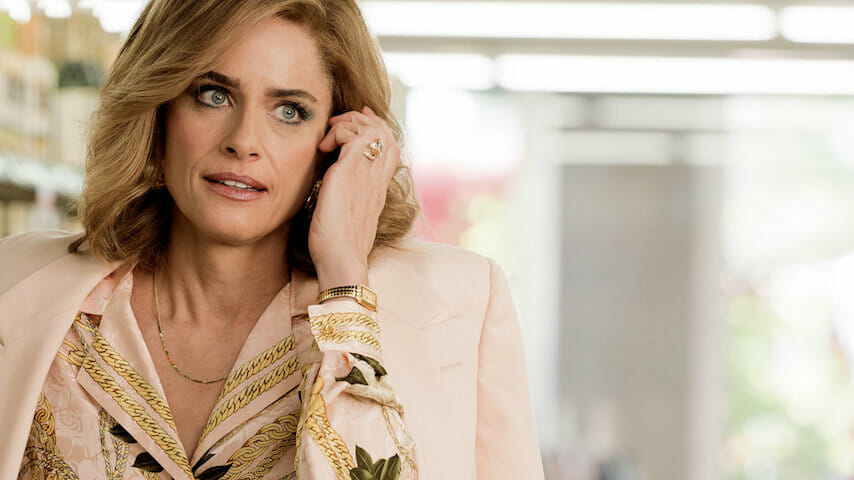
Network: USA
Last Week’s Ranking: 4
This Week: In the finale, Betty becomes defined by her inability to move forward. Even after her conviction, she showed no remorse.
Nothing excuses a double homicide. But the eight-part second season of Dirty John (now an anthology) begins to unravel what drove its lead to a violent act, and sheds light on the long-term effects of clinging to your anger and rage. Based on a true story, Betty Broderick (Amanda Peet) married Daniel Broderick (Christian Slater) when she was 19 years old. She had four children, suffered a still birth and a miscarriage, and worked multiple jobs to put him through medical school and law school. When Dan finally found success as a medical malpractice lawyer, he left Betty for Linda Kolkena (Rachel Keller), his much younger receptionist. He did this cruelly by denying for years that anything was going on between him and Linda, then by moving Betty into a new house under the ruse that they were all going to live their together. Dan was president of the San Diego Bar Association and used his legal connections to make it hard for Betty to find a lawyer. He also sent her to jail and put her in a psychiatric hold. When Linda moved in with him, before they were married, it was her voice Betty had to hear on the answering machine.
But this isn’t what people remember about the story. They may remember the 1992 made-for-TV movie staring Meredith Baxter. They may have listened to the L.A. Times podcast. They may recall the incessant vulgar messages Betty left on his answering machine and that she drove her car into his house. And they definitely remember that in November of 1989 Betty broke into Dan’s new home and killed Dan and Linda in their sleep.
Showrunner Alexandra Cunningham never forgets whose story she is telling, and Dirty John is the TV equivalent of a compelling page turner. From the Dynasty-esque outfits and hair to the fabulous 80s laden soundtrack, Cunningham peppers the series with wonderful ‘80s touches. There’s a certain camp to the series, but it never distracts from the central theme: That far too often our society casts a woman aside in favor of the man. And that’s the dirty truth. —Amy Amatangelo
4. The Capture
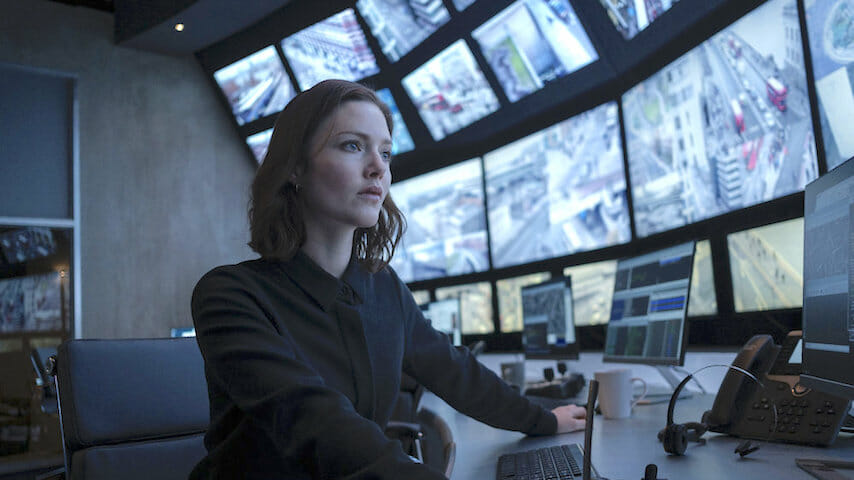
Network: Peacock
Last Week’s Ranking: Not Eligible
This Week: Hey, it’s the one good original series on Peacock! (From the BBC)
In The Capture, written and directed by Ben Chanan, Holliday Grainger’s DI Rachel Carey believes she has an open and shut case regarding an assault and kidnapping captured on CCTV. The perpetrator’s face—Lance Corporal Shaun Emery (Callum Turner)—is clearly shown and easily identified, leading to his quick apprehension. But was it him? It’s not just that he’s confused about this crime that he has supposedly committed that he has no memory of (and in fact, has a conflicting memory about), it’s that it also comes on the heels of an overturned conviction based on de-synced audio and video evidence, suggesting how easily manipulated that kind of evidence can be.
A smart and twisty thriller (imbued with a cozy autumnal London aesthetic), The Capture leads Rachel down a path to question everything she sees—including live events that may be manipulated. The how and the why drive this captivating 6-episode season (which the BBC has already renewed), introducing us, via Rachel, to the technique of “correction methods,” which sounds an awful lot like pre-crime from Minority Report.
While there is a certain sci-fi element to where the series ends up, it’s not out of the realm of possibility now or in the far future. Deep fake exists, as does facial recognition software and increasing camera surveillance everywhere. We carry a lot of it around with us in our pockets with our phones, but The Capture doesn’t get into the tech side so much as it wants to explore the moral quandary of exploiting its general potential. With doctored footage, redacted frames, the exploitation of blindspots and more, it feels like the stuff of conspiracy. But when a character describes their methods of doctoring footage as “correction is not fake evidence, it’s truth reenacted,” there is a chilling reality to it.
Peacock has placed The Capture on its short list of new launch titles, and it is by far the best of the bunch (even though it’s an international acquisition and not an original). This thoughtful but still thrilling series is a worthwhile watch that may leave you a little shaken—and wanting to make sure your computer cameras are covered … just in case. —Allison Keene
3. The Alienist
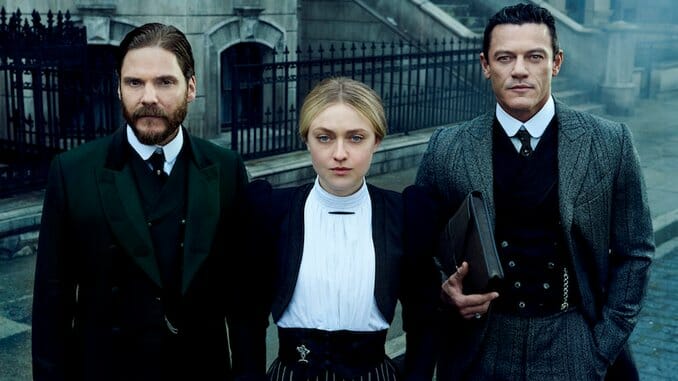
Network: TNT
Last Week’s Ranking: Not Eligible
This Week: The period crime drama returns at its nastiest and most captivating.
The second season of TNT’s dark crime drama The Alienist, subtitled Angel of Darkness (after the novel of the same name by source author Caleb Carr), improves its storytelling significantly while maintaining one of the most interesting aesthetics on air.
A year has passed since the events of the first season: It’s 1897 and Dr. Laszlo Kreizler (Daniel Brühl) is back as your great-great-great-grandpappy’s criminal psychologist AKA alienist. The blessings of history have sent Teddy Roosevelt (a weak link from last season) out of the picture, having been appointed Assistant Secretary of the Navy. That leaves The Alienist’s Ye Olde Mystery, Inc. firmly in the hands of its central trio. Intense, driven Sara Howard (Dakota Fanning) now runs her own detective agency while timid, fidgety John Moore (Luke Evans) hangs on her every word, writes at the New York Times, and falls deeper into high society politics. The season wastes no time assembling the squad, which must solve a rash of baby-nappings.
Period props, along with various maps, photos, scientific instruments, and other tactile 1890s ephemera only enhance this visually-driven production, one that seems to give its lead a new, out-of-control hat and shirtwaist in every scene. The props are upsetting, the staging is nerve-wracking, and the shot choices are often unsettling. Angel of Darkness looks so lush you’ll think robber barons were behind it.
Flashes of police brutality and corruption in the news industry supplement a story of cyclical injustice and violence, but with so much going on, it’s easy for aspects to feel underdeveloped. However, I still wanted more. By pushing a more layered story to its limits and maintaining its exquisite art direction, The Alienist’s second case is starting to show gold beneath the gilt. —Jacob Oller
2. The Baby-Sitters Club
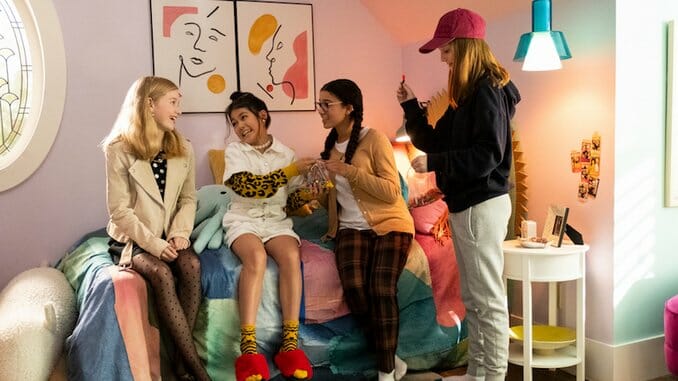
Network: Netflix
Last Week’s Ranking: 2
This Week: Yes, it remains pure and perfect.
Longtime fans of Ann M. Martin’s The Baby-Sitters Club, a chapter book series whose late ‘80s/early ‘90s aesthetic is so iconic Scholastic sells a tin-boxed set of original covers, will be understandably skeptical of Rachel Shukert’s upcoming Netflix adaptation. It seems impossible, after all, that anyone could pluck Kristy, Mary-Anne, Claudia, Stacey and Dawn from their perch in Claudia’s pre-Y2K bedroom, drop them square in the age of Instagram, and not lose something in the translation. I mean, the whole idea behind the Baby-Sitters Club—five girls gathering around a landline phone for half an hour, once per week, to field neighborhood baby-sitting requests as a quasi-socialist collective—is just so deeply analog. And 2020? It’s just so… not.
Well, I am happy to report: Skeptics need not fear. As clever, tender, and earnest as you remember The Baby-Sitters Club books to have been whenever you first read them, Shukert’s vision more than rises to the challenge. Between her confident translation of Martin’s original characters, the natural-but-goofy cinematic language brought to the table by Lucia Aniello and a raft of other (mostly female) directors, plus the endless charm of the series’ young core cast, this newest adaptation is a dream. Like its namesake, The Baby-Sitters Club (Netflix edition) is funny, sweet, and emotionally complex. Just as importantly, though, it implicitly understands the ways in which Kristy’s retro baby-sitting club business model is a perfect analog solution to a whole sea of problems caused by digital technology(/the gig economy)’s stranglehold over modern society.
Smartly, one thing Shukert doesn’t update in this adaptation are the structural elements most signature to the original series. Of the ten episodes the comprise Season 1, the first eight mirror their chapter book counterparts, alternating between the five core sitters’ perspectives, with two episodes each being told from Kristy, Claudia and Stacey’s points of view, and one each from Mary-Anne and Dawn’s. The two-part season finale, meanwhile, mirrors the super-sized Super Special books that functioned, in the original, as a series within a series, taking the girls away from their baby-sitting duties and letting them share the narrative focus equally. For readers, these Super Specials were objects of intense anticipation; for viewers, following Elizabeth and Watson’s big wedding celebration in Episode 8, “Welcome to Camp Moosehead” (Parts 1 & 2) caps off what was already a narratively complete season in the most emotionally satisfying way. Should the pop culture fates conspire in our favor, though, this will be just the first of many clever and tender seasons of The Baby-Sitters Club to come. —Alexis Gunderson
1. David Makes Man
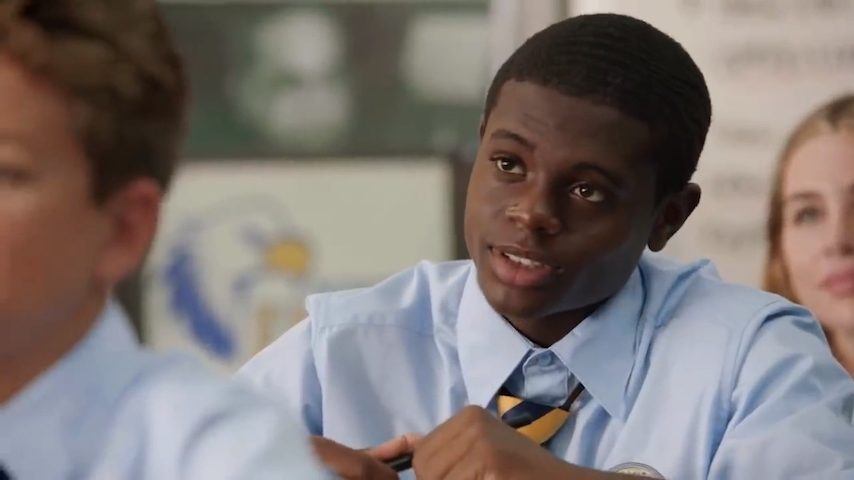
Network: HBO Max
Last Week’s Ranking: Not Eligible
This Week: The OWN series is now available to stream on HBO Max, and you must!
Expectations are the last thing you should be bringing into OWN’s first original teen-centric series. David Makes Man transcends expectations. It transcends genre. It just… transcends. Much of this transcendence is due, of course, to creator Tarell Alvin McCraney’s particular line of naturalistic poetic genius. If you’ve seen Moonlight or High Flying Bird or Choir Boy, the fact that young David Young’s story both defies easy description and delivers deeply human realness on every page won’t be a surprise. But while David Makes Man would be excellent no matter how it traveled from McCraney’s imagination to OWN’s screen, the version we get to watch rises to exceptional thanks to the presence of two things: Akili McDowell’s astounding work as teen hero David (a.k.a. DJ / Dai), and the textural shimmer of the team’s dreamy, innovative visual style.
So much of David Makes Man depends on the inner churn David experiences as he tries to balance the daily struggle to survive life in the Ville without falling into the drug-dealing world that got his deceased father-figure killed, the academic expectations that seem to exist in a vacuum at the magnet school he buses to every day, and the quotidian social pressures to fit in and not be weird (slash, not be embarrassed by his corny-ass mom) that every middle-schooler in human history has had to face. More often than not, McDowell is asked to communicate that tightrope walk with just his eyes, or his balled fists, or his quicksilver mask of a school-day grin. It’s so much, but McDowell delivers every detail with such heartfelt naturalism that it’s hard to remember David isn’t real. It’s genuinely astounding. —Alexis Gunderson
For all the latest TV news, reviews, lists and features, follow @Paste_TV.







































